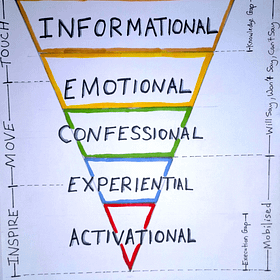The First Session (Part V. #224) ⭕️
Examining a highly effective therapist and how she conducts the first session.
I’m circling back to the topic of first sessions.
In case you missed it, here are the previous four parts:
Today, we zoom in on a unique study that came out in 2023.
Inside the consulting room of a highly effective therapist: An analysis of first sessions
This qualitative study by Sílvia Caçador, Daniel Sousa and Mick Cooper examined one particular highly effective therapist in the UK and analysed the audio recordings of two of her clients in the first session.
Of note, she wasn’t nominated by others as just being good at her job, but her outcomes on the Patient Health Questionnaire measure of depression (PHQ-9) and General Anxiety Disorder Assessment (GAD-7) were consistently higher on rates of improvement than her peers in a university therapy clinic.
Oh, and her level of clinical experience? “One year of post-qualification clinical experience” at the time of the study. (In case you are curious about how clinical experience impacts outcomes, read this).
Here’s what they found from the analysis of how this particular highly effective therapist conducted the first sessions:
Here are four segments of the transcript that’s worth noting.
Note: You can request for the full paper in Research Gate.
3.1.4. Tries to ensure that therapy focus is meaningful to clients
“The therapist sought to capture emerging therapeutic goals from the clients' narratives and encourage their co-elaboration, while introducing or clarifying expectations about therapeutic change, as the following excerpt illustrates:
T: Ok, so you can - perhaps what you would like to get to with those feelings is you've experienced them, they will be, I won't say ‘scars’, but sometimes scars of relationships are positive as well. Good relationships leave marks too. But you want to be able to take all the marks that relationships have left and process them, the negative as well, in a more positive way.
Therapeutic goal formulation was presented as a dynamic process, oriented towards clients' needs. If the therapist felt that her contribution might have overlapped with clients, she would address the issue directly:
T: Ok, so on that basis then, did you… and I am kind of conscious that I feel… do you feel… hum, how do I wanna word this…? Is there any sense in which you feel that I've imposed those goals onto you? I know they're things that I've picked out…”
My notes: It’s worth highlighting that the questions, statements and utterances made by the therapists aren’t crisp and “verbally fluent.” In fact, they sounded clunky. But I think that’s the beauty of it. It sounded like the therapist was thinking-aloud, searching and trying for two individuals to be of one mind.
By the way, goal consensus is one of the things therapists take for granted. Whenever I listen to ‘stuck’ cases recordings when helping other therapists, this is one of the things I check for: “Is there agreement on the direction/focus/goal taken?
Why? Agreement on goals is the least studied and yet, has the highest impact on outcomes.

3.2.1. Encourages clients to deepen their internal experience
“The therapist followed the clients' narratives very closely and responsively. Her interventions derived in a very direct sequence of clients' narratives, and she tried to establish and keep the focus on concrete episodes and on clients' internal experiences. There was a consistent intention to lead clients to elaborate on their emotions and experiences, abandoning abstract or rationalised narratives. The therapist often resorted to open-ended formulations, for instance:
T: Ok. Ok. And I'm wondering – I'm wondering what it is like for a little boy to hear that their mom is leaving…
When clients showed resistance or difficulty in deepening their internal experience, the therapist looked for more guided ways that seemed to be unblocking for clients. For instance:
T: And what, can you, if you had to, if you have to pick a label to label the first feeling that came out when you wake up and feel like that…”
My notes: We mustn’t forget the fact that this is in the first session! Who says we can’t go deeper even in the first point of contact?
This reminds me of the important contribution of Eugene Gendlin’s work on focusing and going deeper into our felt experiences. Gendlin’s work seemed to have an impact on other approaches like emotion-focused therapy and somatic-based approaches.
As I’ve written elsewhere, we are hungry for depth.
We Are Hungry for Depth. Frontiers Friday #209 ⭕️
Today’s episode comes from my other Substack, Full Circles: Meditation on the Inner and Outer Life.
3.2.2. Picks up clients' subtle cues and promotes focus on those subjects
“The therapist demonstrated a great sensitivity to small verbal and nonverbal cues that could point to potentially relevant issues for the client. For instance:
T: Ok, but you're smiling when you speak of him, you look quite – you feel quite fond of him…
Quite often these interventions served as a stimulus for clients being able to address significant themes.”
My notes: This theme on picking up subtle cues can easily be taken for granted. If a therapist is inundated with various intake questions and forms that they need to get through, it makes it harder for them to be available and to attend to the moment-by-moment unfoldings.
3.3.2. Uses the self as a therapeutic tool and communicates her inner experience
The therapist's distinctive presence in session involved a conscious attention to her own internal experience. For instance:
T: Ok. Hum. [pause] Hum. It actually affected me.
C: Yeah?
T: Yeah. I, I, I'm, I… Yeah. I'm just trying to process what that's like, but you seem…
This attention to her internal processes seemed to be used as a way of interpreting clients' experiences. The way the clients' narratives echoed for the therapist (e.g. emotions, images or intuitions) was used as a guide for her own empathic process. In session, her authenticity was manifested in multiple disclosures about her experiences of her clients and by meta-communicating about the here-and-now of the therapeutic relationship. For instance:
T: I'm even really experiencing it in the way we're interacting today, not that you weren't chilly to me, but I feel as if…
My notes: This is one of the most significant snippets. Too often, we ask our clients to be vulnerable, to share and to disclose what’s inside of them, but we fail to open up what’s inside of us.
There is a difference between content disclosure and emotional disclosure. We may not need to tell our clients everything about ourselves and our past (i.e. content disclosure), though at times it might be appropriate and therapeutic. But there are times when we can stop being so clinical and share what’s personally affecting us on the inside in the now (i.e., emotional disclosure).
Why is this so potent? It is our shared human experience. It reminds us that we are accompanied through the pain by someone really real.
Many moons ago, my therapist said to me that she was moved by something I said. I don’t recall what I said. She meant it. She was holding back tears. There’s no way to quantify that moment. I was somewhat surprised. But it meant so much to me as a client. I thought I was weird to think and feel a certain way, but her reaction made me feel… human.
If we don’t partake in deep listening and share with each other our inner experiences, don’t be surprised when generative AI takes over.
Final Thoughts
The researchers noted,
The results show key aspects of the therapist's performance, such as distinguished clinical skills, responsiveness and strong relational abilities.
Though they noted in their limitations and recommendations that future study should compare “good-outcome therapists against therapists whose clients had poor outcomes,” it also would be interesting to analyse the same therapist’s recordings of unsuccessful cases, as this study focused only on two of her successful cases.
Even the most highly effective therapists have unsuccessful cases.
Finally, after reading this study, don’t be mistaken that these are the words that you should say and use with your clients at every first session.
You are not this therapist that was analysed.
Learn at the level of principles, not methods.
The task for you is to find the freedom and therapeutic use of being you. And when you broaden your nature and abilities, we can be of better help to our clients.
The most professional thing to do in our field is often the most personal thing.
Don’t get hung up on what therapeutic approach you are using.
Relate with the person in front of you.
Get closer.
Notice Board:
Our 3rd Cohort for the Deliberate Practice (DP) Cafe is about the kick-off in Nov 2025. If you are keen to join Scott Miller and I, and a small group of like-minded practitioners from all over, drop me an email to be on the waitlist. admin@darylchow.com
Daryl Chow Ph.D. is the author of The First Kiss, co-author of Better Results, The Write to Recovery, Creating Impact, and the latest book The Field Guide to Better Results. Plus, the new book, Crossing Between Worlds.
You might be interested in my other Substack, Full Circles: Field Notes on the Inner and Outer Life.







Thanks for this piece. really interesting. I’ve noticed that, especially among beginner therapists, there’s often a tendency to try to be “perfect” in the first session. This can make them come across as inauthentic or mechanical. The examples you shared are great demonstrations of how to be natural and personal instead. And I like that you mentioned that it’s okay to go deeper into emotions in the first session
I so appreciate seeing the “clunkiness” of her language. Helps me embrace my own inherent clunkiness more! And Genlin/Focusing has been popping up all over the place for me lately, so it was nice to see him here too!